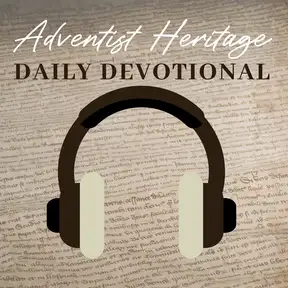The whispering pines
after the great disappointment
of 1844, hope seemed to vanish.
Families were broken.
Churches turned away.
Adventist believers and thousands
walked away from faith altogether,
but a small group refused to give up.
They didn't have buildings or
budgets, but they had something
more faith that refused to die.
And from those quiet gatherings,
a movement began that would
eventually span the globe.
At that time, there was no official
church, just scattered groups of
believers still searching for answers.
They weren't looking to
start a denomination or
write a doctrinal statement.
They were just trying to
understand what went wrong.
As they poured over scripture,
something began to shift.
A new understanding emerged
particularly around the book of
Hebrews and the sanctuary in heaven.
They realized the prophecy in Daniel
wasn't pointing to Christ's return on
Earth, but to his entry into the most
holy place of the heavenly sanctuary.
The date hadn't been wrong,
just their interpretation.
That realization was the spark
that kept the flame alive.
Joseph Bates, a former Sea Captain,
was among the first to grasp the
significance of the seventh day Sabbath.
After months of study, he committed
to its observance and began to
share the message wherever he could.
He traveled mostly on foot,
often giving away his last coins
to publish small pamphlets,
explaining what he was learning.
It was Bates who introduced the
Sabbath truth to a young preacher
named James White and his young wife,
Ellen James was a bold, practical
leader, Ellen, a quiet but spiritually
gifted young woman who had experienced
visions affirming God's continued
guidance for the remnant believers.
Together they became key figures
in the slowly growing movement.
But these early believers
didn't have much.
They exchanged handwritten
letters across states.
They studied by candlelight.
They traveled by wagon, sometimes
through snow just to meet others
who shared their convictions.
They had no schools, no hospitals, no
publishing houses, only the conviction
that God was still leading them.
Health reform became part of their
growing worldview, not only through
policy, but through prayerful reflection
on how to honor God in body and mind.
. The vision for education didn't
begin with buildings, but with
conversations around kitchen tables
about raising children to think clearly
and serve faithfully piece by piece.
The foundation was being laid
not in a conference office, but
in living rooms and log cabins.
These were believers who had
every reason to give up, but chose
instead to keep searching, to
keep studying, to keep showing up.
They didn't think they were
building something global.
They didn't even know
what to call themselves.
But their faithfulness in those years
became the seeds of the Seventh Day
Adventist Church, a movement that would
eventually span languages and generations.
And it started in places
you couldn't find on a map.
No pews, no signs, just conviction.
A hunger for truth and a faith that
refused to die in disappointment.
Maybe your walk with God feels small.
Maybe you are the only one in your
town, your school, your family.
Maybe your church doesn't look like
much, but every Sabbath you keep,
every prayer you whisper, every page
of scripture you open, puts you in the
footsteps of those first believers.
They didn't need a
building to be faithful.
They just needed the
courage to keep going.
And through their quiet persistence,
the church they never intended to
start became a worldwide movement.
Sometimes the most powerful
churches are the ones no one sees,
and sometimes the map doesn't
matter because faith finds a way.
Episode eight.
Planting The Seeds Read by Jared Stoff.

